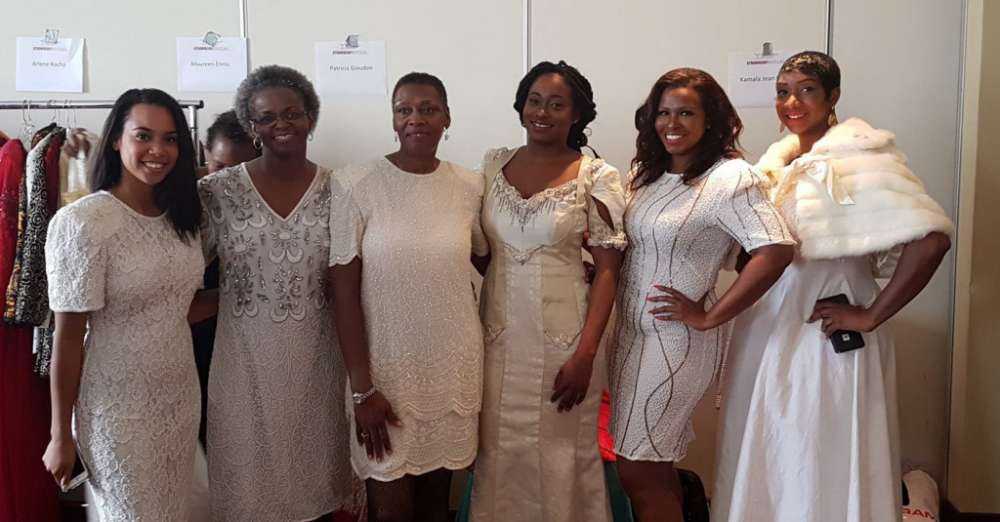BY ALYSSA MAHADEO
On Sunday June 5th, at the Pearson Toronto Convention Center in Brampton, P.A.C.E Canada held their annual Strawberry Social luncheon in support of the project for the advancement of childhood education. This special luncheon is hosted annually by the organization in order to raise funds for their many projects working towards supporting programs in Early Childhood Education in Jamaica.
This year’s event was an afternoon filled with fun and surprises with all proceeds from ticket sales, donations and silent auction directly contributing to achieving their goal of changing the lives of children and teachers in the communities of Jamaica.
P.A.C.E. Canada was founded in 1987 when Jamaican-born educator Dr. Mavis Burke founded the organization in response to a request from then Prime Minister of Jamaica, the Most Hon. Edward Seaga to assist community-based pre-school (basic schools) in Jamaica. The organization’s focus has since expanded to include the well being of children in Canada. The launch of the Adopt-a-School Program revolutionized assistance to basic schools/early childhood institutions in Jamaica. For $1.00 CDN per day ($365.00 per year), Canadian patrons can adopt a school of their own choosing, or have a school selected for them to receive contributions for its development.
The mission of P.A.C.E. Canada is the promotion of early childhood education with a special focus on children of pre-school age in situations of racial, cultural or economic disadvantage. Their goal is to be responsive, rallying and assisting community efforts to provide a positive learning environment for young children by facilitating parent and teacher education while providing practical forms of assistance for the learning curriculum.
In their declaration to advance educational opportunities for children in Jamaica, and Canada, P.A.C.E has demonstrated the universal importance of access to education for all. Since 1987 they have greatly assisted efforts in Jamaica in building and nurturing the eager minds of the youngest school aged children.
Their many programs are tailored to address the most urgent needs of young students including: Adopt-A-School: Providing developmental opportunities for three to five year olds; School Supplies: Donations are used to purchase boxes of school supplies; Teacher Training & Development: Opportunities for early childhood practitioners to achieve training and certification; Special Initiatives: A number of special programs including computers, music, learning resources and facilities; and Support for Children in Canada: Boys and Girls Club of East Scarborough.
The afternoon program for luncheon commenced with a Meet and Greet with honoured patrons of the Board and distinguished members from Jamaica and a warm welcome to guests from Sandra Whiting, President P.A.C.E. and Lloyd Wilks, Consul General of Jamaica.
Highlights of the social luncheon included a chic and stylish Vintage Fashion Show coordinated by Eve English of English Vintage Couture and featured a collection of vintage designer fashions. Eve is renowned for her spectacular eye and ability to source fabulous sought-after pieces.
Jay Douglas & The All Stars provided entertainment for the afternoon, with special guests Robert Burke and Thando Hyman.
Finally to top it all off the tradition continued with the Parade of Hats a delightful presentation of unique hats worn by the guests for the event. A wonderful and historic tradition these gorgeous ladies paraded around in their beautiful hats for everyone to see. Feather Your World’s Llieana George was back showcasing her stunning hats and they were made available for rental so that guests could participate in the Parade.
In 2017 P.A.C.E Canada will be celebrating thirty years. They are planning on making it a productive and memorable year by adding thirty new schools to their roster with the help of 300 new donors and supporters to supply thirty new teaching scholarships. They are planning on launching a new speaker series as well as hosting a parent conference and they are looking to the community for support to continue the legacy of supporting basic schools in Jamaica and developing educational programs in Canada.
To learn more about P.A.C.E Canada, and how you can get involved in their legacy increasing and supporting programs in Early Childhood Education please visit http://www.pacecanada.org/

